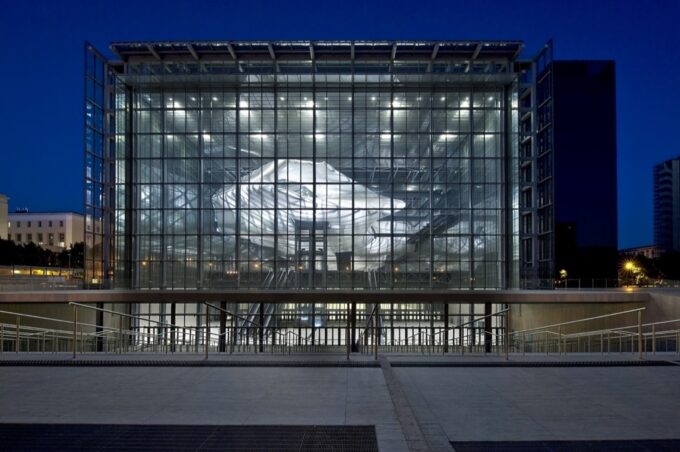- Home
- Articles
- Architectural Portfolio
- Architectral Presentation
- Inspirational Stories
- Architecture News
- Visualization
- BIM Industry
- Facade Design
- Parametric Design
- Career
- Landscape Architecture
- Construction
- Artificial Intelligence
- Sketching
- Design Softwares
- Diagrams
- Writing
- Architectural Tips
- Sustainability
- Courses
- Concept
- Technology
- History & Heritage
- Future of Architecture
- Guides & How-To
- Art & Culture
- Projects
- Interior Design
- Competitions
- Jobs
- Store
- Tools
- More
- Home
- Articles
- Architectural Portfolio
- Architectral Presentation
- Inspirational Stories
- Architecture News
- Visualization
- BIM Industry
- Facade Design
- Parametric Design
- Career
- Landscape Architecture
- Construction
- Artificial Intelligence
- Sketching
- Design Softwares
- Diagrams
- Writing
- Architectural Tips
- Sustainability
- Courses
- Concept
- Technology
- History & Heritage
- Future of Architecture
- Guides & How-To
- Art & Culture
- Projects
- Interior Design
- Competitions
- Jobs
- Store
- Tools
- More

Architecture is more than just the construction of buildings. It is the craft of designing structures that reflect the spirit of an era, the culture of a society, and the personality of individuals. At the heart of this craft lies architectural inspiration – the spark that ignites the flame of design innovation. Architectural inspirations serve as the conceptual foundation that helps architects breathe life into buildings, landscapes, and communities. The importance of such inspirations cannot be overstated, for they determine the aesthetic, functional, and sustainable attributes of our built environment. Architectural inspirations allow architects to create buildings that express a unique identity. They can reflect the architect’s personal style, the culture and history of a location, or a client’s individual personality. This results in built environments that are rich in character and diversity. Inspirations often push architects to challenge established norms and explore innovative design solutions. They serve as a catalyst for progress, encouraging architects to experiment with new materials, technologies, and design concepts. They help architects create designs that are sensitive to their context. This includes not only the physical context (the site and its surroundings) but also the social and cultural context. Such designs contribute positively to the local character and social fabric of a place.
The Nature of Architectural Inspirations
Architectural inspirations can arise from a multitude of sources. Some architects draw inspiration from the natural environment, allowing the shapes of mountains, rivers, or forests to dictate their designs. Others may find inspiration in art, history, or different cultures, giving their structures a unique character that reflects a particular period or ethos. Still, others look towards technology, sustainability, and societal needs as primary drivers of their design thinking.

The architectural inspirations can be broken down into three main categories:
Nature: Architects like Frank Lloyd Wright and Antoni Gaudi drew their inspirations from the natural world, leading to the creation of iconic structures like Fallingwater and the Sagrada Familia. Their work illustrates how architectural design can mirror natural forms, blend into the landscape, and complement the surrounding ecology.
History and Culture: The influence of history and culture on architecture is evident in various architectural styles such as Gothic, Renaissance, and Baroque. Even contemporary architects often incorporate historical or cultural elements into their designs to create a sense of continuity and contextual relevance. Zaha Hadid’s designs, for instance, often referenced her Iraqi roots, resulting in a distinctive architectural language.
The Pyramids of Giza, Egypt: As one of the Seven Wonders of the Ancient World, these iconic structures inspire with their grand scale, precise alignments, and timeless endurance. The pyramids are a testament to ancient Egyptian civilization’s architectural and engineering prowess.
The Parthenon, Greece: Located in Athens, the Parthenon stands as an enduring symbol of Ancient Greek civilization and is considered the epitome of Doric architecture, characterized by simplicity, strength, and harmony.
The Bird’s Nest (Beijing National Stadium), China: This structure was designed by Swiss architects Herzog & de Meuron for the 2008 Olympics. Its innovative steel lattice structure, resembling a bird’s nest, represents a unique blend of traditional cultural elements and modern design principles.

The Colosseum, Italy: A marvel of Roman engineering and design, the Colosseum was an architectural inspiration for many modern-day stadiums. Its robust and practical design, coupled with its significant cultural history, makes it a truly inspirational work.
Sagrada Familia, Spain: Designed by Catalan architect Antoni Gaudí, this architectural masterpiece stands as a testament to the harmonious integration of architectural design and natural forms. Even in its unfinished state, it’s a major source of inspiration.Technology and Sustainability: Modern architectural inspiration increasingly comes from advancements in technology and sustainability. Architects like Norman Foster and Bjarke Ingels integrate cutting-edge technology and sustainable principles into their designs, leading to the creation of energy-efficient, eco-friendly buildings that push the boundaries of what’s possible in architecture.Architectural inspirations are the lifeblood of design.
They provide architects with the impetus to create, innovate, and leave a lasting impact on the built environment. They are the silent muses that whisper in the architect’s ear, the unseen hands that guide the architect’s pen. Architecture around the world has been inspired by a variety of influences, ranging from cultural and historical contexts to geographical features and technological advancements. Here are a few inspirational architectural works from various corners of the globe:

Submit your architectural projects
Follow these steps for submission your project. Submission FormLatest Posts
General Arrangement Drawings in Architecture: The Backbone of Clear Design Communication
General Arrangement Drawings explained: what they are, when to use them, how...
The Ultimate Guide to Fencing in North Dakota: Choosing the Best Fence for Your Property
Watching a chain link fence twist in 70 mph winds near Minot...
Gaudí: Where Architecture Meets Science
Gaudí: Where Architecture Meets Science shows catenary arches, ruled surfaces, and biomimicry...
How Housing Market Forces Shape Architectural Design Today
Architecture never exists in isolation. Buildings rise from a mix of ambition,...












Leave a comment